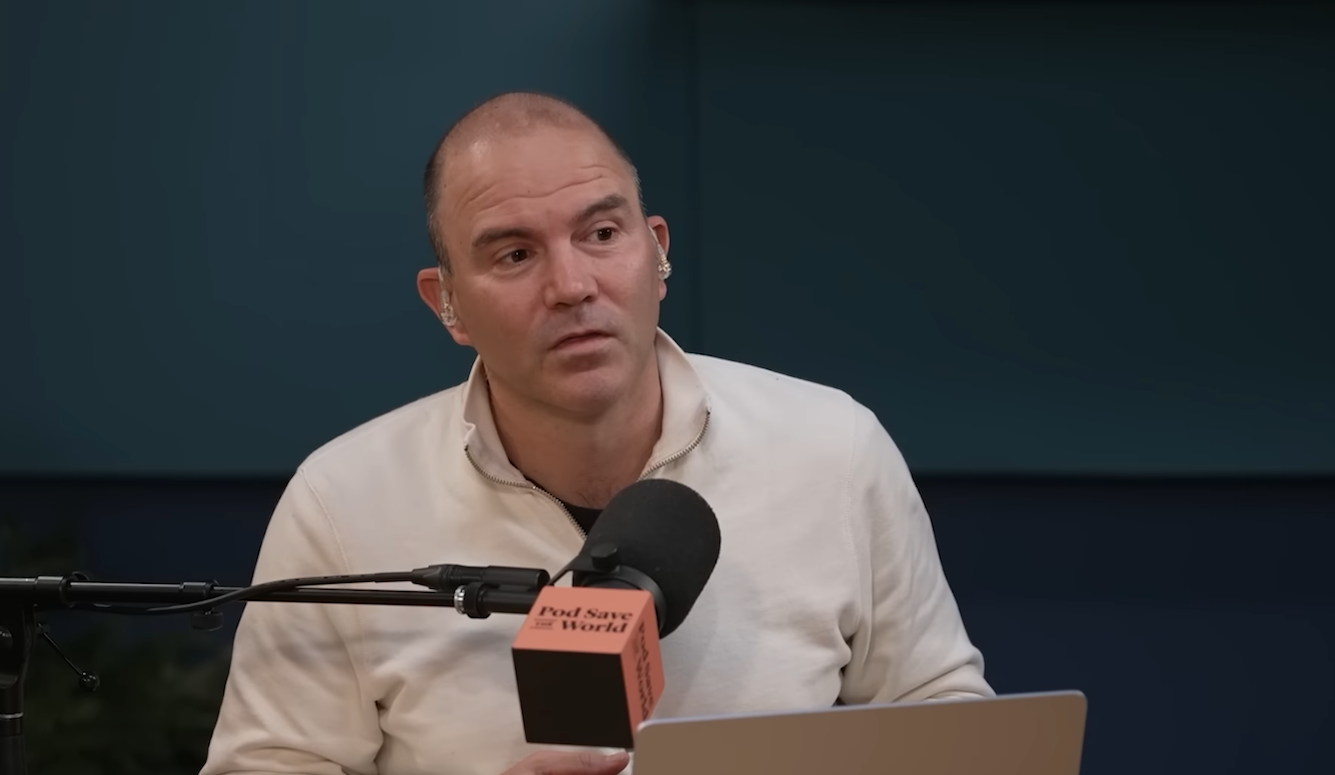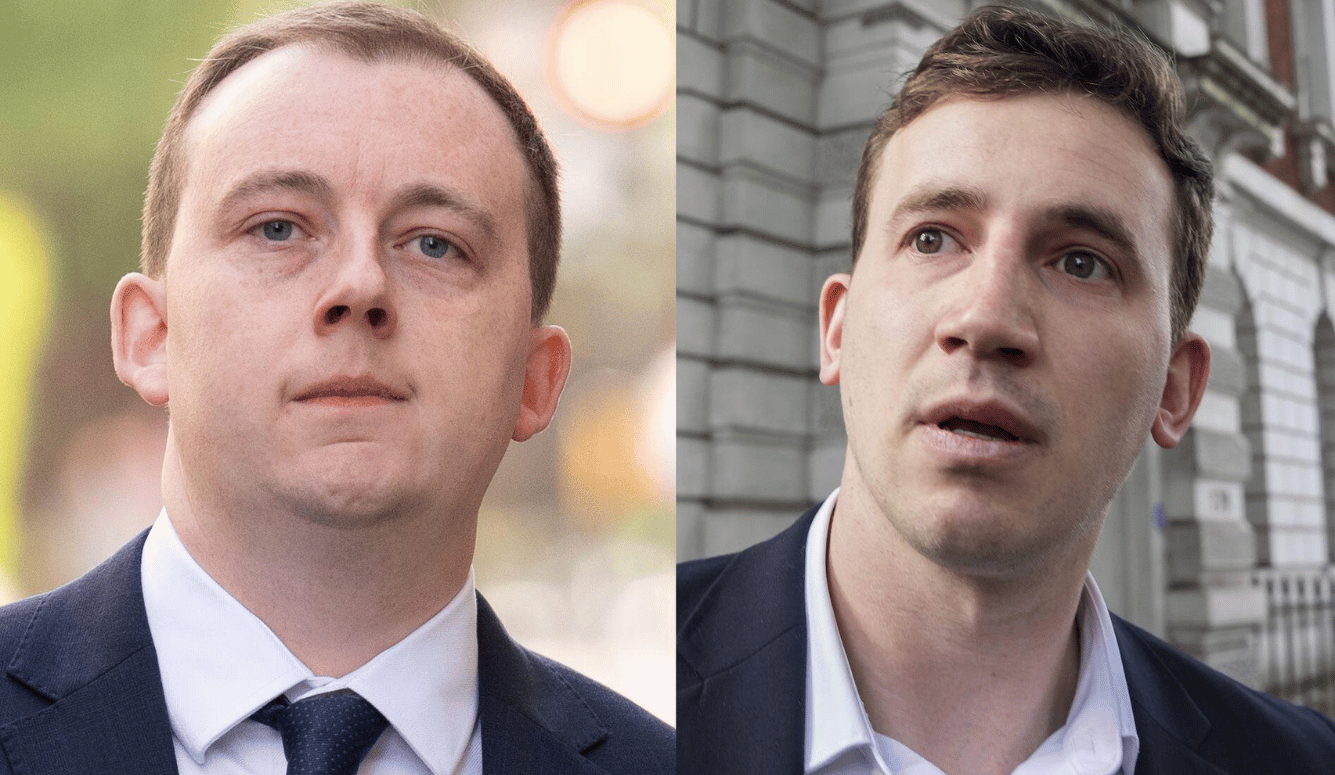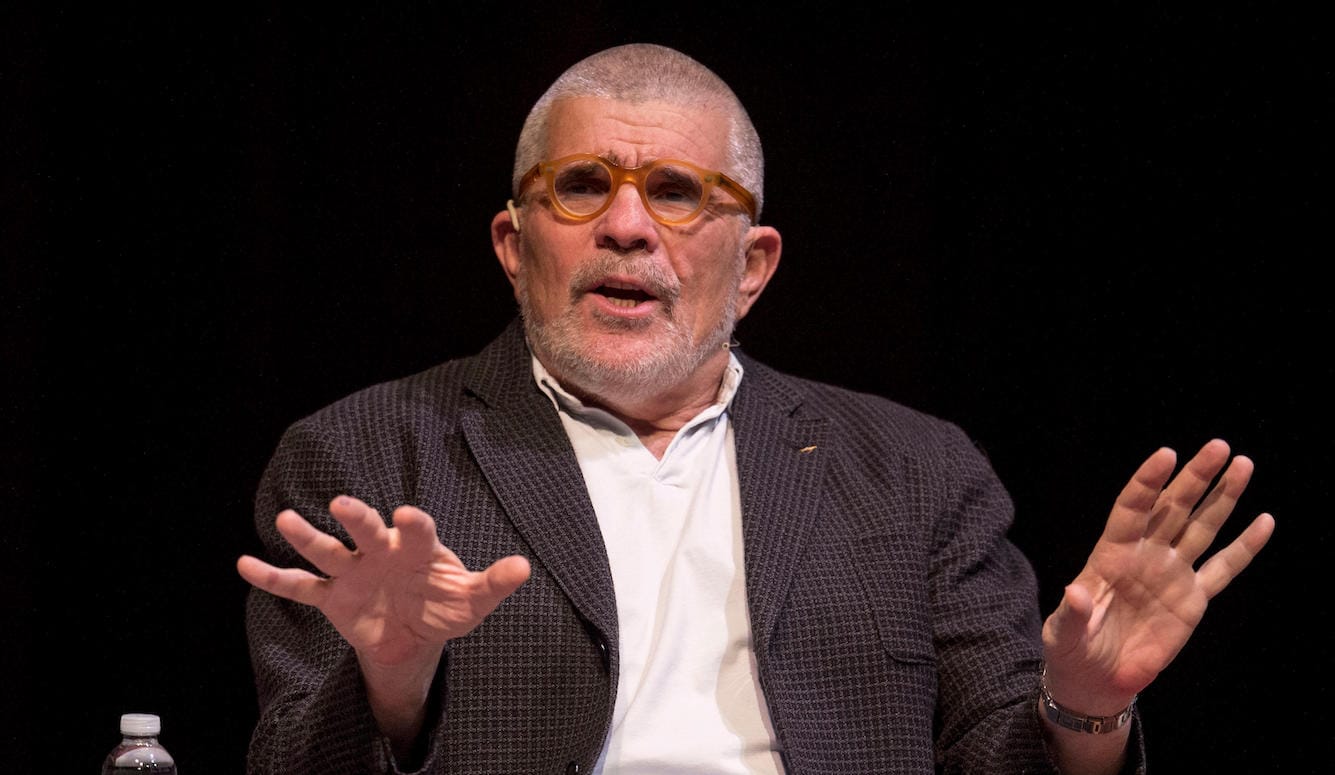Science / Tech
We Won’t Force Addicts to Change
We are wasting tremendous resources on ineffective, mandatory approaches to addiction.

How can we help people with destructive habits who exhibit little or no desire to change? And if their destructive habits adversely impact others, is society right to force change upon them? Is compulsory change even possible? Nowhere are these questions more relevant than in our response to the ongoing problem of drug addiction. The personal and societal damage caused by drug addiction has been well-documented, and the problem is of such magnitude and impact that it understandably prompts action from governments around the globe.
Besides the legal and moral issues that surround trying to force behavioral change on others, it is important to ask whether such efforts accomplish anything of value to addicts and society. Can we successfully force addicts to change? Is there an evidence-based case for compelling addicts into treatment? At present, many institutions within our society operate on the premise that, yes, you can force addicts to change. Many US citizens in treatment today were referred there by our criminal justice system. An extensive drug court system (and similar programs in other countries) operates under the presumption that long-term treatment is both effective and a better choice than punishment for crimes committed by addicts. But does the evidence support this approach?
Coercion or compulsion?
There is a fine—sometimes indistinguishable—line between coercion and compulsory treatment. Compulsory treatment occurs when a judicial system mandates an addict to complete a treatment program. Coercion is when the addict is ostensibly asked to decide whether or not they wish to enter treatment, though the penalties for refusing may be substantial enough that the addict feels he has no option but to agree. So, the distinction between compulsion and coercion is mostly irrelevant for the addict.
A survey of over 100 countries published in 2012 found that 69 percent had penal codes allowing for compulsory drug addiction treatment. These range from community-based treatment to military-like drug detention centers (for example, those in China, Vietnam, and Malaysia). The latter forms have been condemned by the United Nations as violations of human rights and have mostly been associated with authoritarian governments. A systematic review of the literature on various forms of compulsory drug treatment published in the International Journal of Drug Policy concluded that evidence to date does not support favorable outcomes from this approach to addiction. Indeed, some studies report an increase in drug use or criminal convictions among participants in compulsory treatment programs. A study in Malaysia, where compulsory detention centers co-exist with voluntary drug treatment programs, found that heroin users released from compulsory detention treatment centers relapsed more frequently and sooner than those released from a voluntary treatment program.
Apart from its lack of effectiveness, compulsory treatment also raises serious questions about civil liberties. Especially in light of the poor outcomes produced by any treatment program, combined with the fact that compulsory treatment programs are often not evidence-based, some people question whether drug addiction treatment should ever be forced upon an individual. Others argue that there is precedent for mandating treatment among those suffering from serious mental illness.
Courts in many nations have recognized that some individuals are in a state of mind in which they cannot make rational decisions for themselves. This may be long term, as in the case of the developmentally disabled, or short term—as in the case of a person experiencing a psychotic break. In these cases, it is in the best interests of the person concerned that mandated assessment and treatment occur—even over their strong objection. The judiciary has set a high bar for mandating treatment in such cases, usually involving short-term hospitalization in a mental health facility for assessment and a recommended treatment plan. The court then evaluates the assessment of medical professionals to determine if mandatory treatment will continue.
Some contend that because certain addicts are in such a state of mind, compulsory treatment is likewise in their best interests. As I discuss in my recent book, Breaking the Grip of Addiction, people with significant developmental disabilities and serious mental health issues make up an unknown but meaningful fraction of the addict population. Court precedent and compassionate care would support compulsory treatment for such individuals. But what about those with no underlying developmental disability or serious mental illness? Every state in the US has apparently concluded that this is acceptable, as every state has in place some form of drug court.
What is a drug court?
The first drug court was created in June 1989 in Dade County, Florida. Drug courts are programs that operate as alternatives to normal criminal punishment for individuals with substance use disorder. There are now over 3,000 such courts in the US. Similar courts operate in Canada, Australia, and the United Kingdom. Their primary focus is treatment rather than punishment. While the specifics of these courts vary across the country, they operate in two major ways.
In the first model, criminal defendants who meet certain eligibility criteria are diverted from the usual criminal justice process prior to pleading guilty to a criminal charge. This model is known as deferred prosecution (or pre-trial). In the second model, defendants who meet the eligibility criteria plead guilty to the charges against them, but their sentence is deferred or suspended while they participate in a drug court program. This model is known as post-adjudication. Defendants who complete the drug court program will have their criminal offences dismissed or expunged from their record. In either model, if participants do not complete the program, their case is returned to traditional criminal proceedings.
Drug court participation is multifaceted and involves engagement with the program for months or years. It commonly involves frequent random drug tests, substance abuse treatment (most commonly some sort of 12-Step program), case management that assists in educational and employment opportunities, and frequent appearance before the drug court. Clients are motivated by the knowledge that failure to meet the expectations established by the drug court will mean a resumption of criminal proceedings against them and the potential of incarceration.
Do drug courts work?
Like so much about our response to addiction, the question of whether or not drug courts work is fraught with uncertainty. While there are many potentially valid measures to address this question, whether or not they lead to change in addicts is the most relevant. This question is especially difficult to answer objectively since drug courts drive many people into treatment who are not addicts. Numerous studies have shown that participants in drug court may not meet the criteria for addiction, including one study that found 80 to 90 percent of juvenile participants were users but not addicts. Sometimes individuals referred to drug courts are not even users, they are dealers whose drug possession or distribution charges have landed them in drug court. How meaningful is an assessment of abstinence from drug use during a program for an individual who did not use illicit drugs before treatment?
The ability to get unbiased information is further complicated because the largest collector of data for drug court success in the US is a national organization that advocates for drug courts. Having an advocacy group serve as the repository for and analyzer of data does not meet the needed rigor for unbiased assessment. One can readily find declarations of high success rates from informal surveys conducted by specific drug courts, but these claims have not stood the test of careful study.
As seen in other forms of intervention for addicts, many research studies conducted on drug courts have serious methodological flaws and yield uninformative results. For example, some studies have assessed the outcomes of subjects eligible for drug court versus those not eligible. Obviously, these two groups of subjects are not the same and it would, therefore, be invalid to attribute any difference in outcomes to the drug court experience. It is also rather common for studies to only compare those who successfully complete drug court. Those who are expelled or withdraw are either ignored or included with those whose cases are adjudicated through normal means. This results in selection bias that will exaggerate the impact of drug courts.
There are very few well-conducted evaluations of drug courts published in the literature. A randomized controlled trial of this approach in Baltimore found no difference in crime, substance abuse, employment, mortality, or social stability in those participating in drug court versus those subjected to normal judicial processing. Another trial of the drug court in Maricopa County, Arizona, found little difference between those taking part in drug court versus those in normal adjudication processes at 12 months. After three years, drug court participants had a lower overall arrest record (64 percent versus 75 percent), but the difference was modest. Most participants in both groups had new criminal violations (labeled recidivism).
A major assessment of the outcomes of drug courts in Toronto and Vancouver concluded that these programs do not reduce drug use. Moreover, most participants had new criminal violations over the study period and thus were identified as recidivists. Indeed, over a four-year period, over 84 percent of the participants in the Toronto drug court were expelled or withdrew from participation. A review of 12 studies assessing the impact of drug courts in Australia found this alternative approach to drug offenders produced a small or no decrease in repeated criminal violations.
Drug courts specifically focused on youth also provide little evidence that they decrease subsequent drug use/charges or other criminal activity. A carefully conducted study of nine juvenile drug courts across the US found that youth directed to them generally fared worse (as measured by recidivism) than those placed on normal probation. It is notable that about 70 percent of subjects processed by these juvenile drug courts did not meet the criteria for a substance abuse disorder. Indeed, the study’s authors questioned whether these courts “might be providing too much intervention relative to the level of need—given that most youths will age out [of drug use] naturally.” A systematic review of juvenile drug courts published in 2016 found that “juvenile drug courts were no more or less effective than traditional court processing.”
Overall, the data do not suggest the outcomes achieved through drug courts are an improvement over those seen with normal adjudication for non-violent drug offenders. A strong case can be made that this approach needs to be more carefully tailored to focus on those with substance abuse disorder and not dealers or those simply experimenting with drugs. Research to date shows this differentiation is rarely recognized. Thus, whether or not this approach can improve outcomes specifically in addicts is unanswerable.
What drug courts can do is relieve the burden on judicial systems by moving drug offenses out of the normal judicial docket—provided it adds new resources to develop and operate these alternative approaches to judicial hearings. Federal grants have often been used to start drug courts across the US. Acceptance of such funds does, however, mean locales sacrifice some level of local autonomy in how these alternative approaches are structured. If new funds of this nature are not provided, the resources needed for this alternative approach must come from an already overburdened court system. Drug court does often prevent adding to the swelling rolls of our prisons, which may reduce the overall financial strain on our criminal-justice system.
Court-mandated treatment for addiction
Outside of formal drug courts, it has become common for judges to mandate treatment for those presented to the court on drug-related charges. Studies have repeatedly found that a large fraction of people in treatment programs of various sorts are there because of judicial action. These often include mandatory Alcoholics Anonymous or Narcotics Anonymous meeting attendance. Courts have also mandated youth into residential or halfway house treatment centers—disallowing parents the right to choose the type or location of treatment their dependent minors receive. When my own son was “sentenced” to a residential program as a 16-year-old, we sought, but were denied, to have him take part in an alternative residential program at our expense. Instead, the judge picked a program with a dismal record of success that clearly did not deploy evidence-based approaches (but which had a standing contract with the state government). In addition, our son met no one’s criteria for addiction, yet ended up embedded in a program whose residents were mostly addicts. The judge simply did not have training sufficient to understand the difference between an addict and a person experimenting with drugs who happened to get caught. Nor did he understand why different approaches should be employed for these two groups of drug users.
Where and when did society empower judges to make “therapeutic” decisions? Should they be making such decisions? What has prepared them to intrude into people’s lives in this fashion, including overruling the decisions of parents? Judges rightly decide what punishment they merit when a defendant is pronounced guilty of a criminal violation. They have at their disposal the ability to levy fines, probation, or incarceration. Their position on the bench is based on their demonstrated proficiency in the law—not psychiatry, psychology, or sociology.
Should judges be making decisions to restore personal and social order into the dysfunctional lives of defendants by forcing them into some sort of psycho-social program, especially when these programs offer little evidence of benefit and may create harm? These questions have arisen from members of the bench as well. One District Court Judge in Colorado declared, “I cannot imagine a more dangerous branch than an unrestrained judiciary full of amateur psychiatrists poised to ‘do good’ rather than to apply the law.” Law professor Eric J. Miller opined, “the real question presented by drug courts is whether their version of rehabilitative interventionism is an appropriate goal for judges to pursue.”
Over half of the states in the US allow civil commitments for opioid use, where courts mandate users into treatment. Yet, evidence does not support the claim that individuals committed under these statutes have better outcomes. Indeed, one study found that individuals who had experienced civil commitment reported poorer outcomes compared to those with no civil commitment by essentially every meaningful measure (for example, drug use, overdose frequency, current criminal charges). While it is possible that this group represented users with a poorer trajectory apart from civil commitment, this judicial action certainly did not lead to better outcomes.
What about confrontational interventions?
Loved ones of addicts often develop a sense of desperation—wanting to help an addict who seems uninterested in change, but not knowing how. Watching a family member make one destructive choice after another is a deeply disheartening experience. Nothing was more frustrating in my life experience than to watch my own son’s downward spiral into addiction and feeling powerless to rescue him from ruin. Those who care find themselves reaching for anything to awaken their son, daughter, spouse, or dear friend from the unfolding train wreck their life has become.
A new profession has arisen that claims to help: addiction intervention specialists. There is no licensure for those working in this field, though two US states (Illinois and Pennsylvania) will certify individuals with some experience and training in the field. There is no accreditation of training programs nor demonstration or assessment of competency by individuals seeking certification. These individuals claim they can help families and others stage a confrontational intervention to convince an addict to enter treatment. They bring family and close friends together in an informal setting (commonly the home living room) to confront the addict. Interventionists work in advance with families to develop a confrontation strategy to convince the addict that this is an effort to save their life. Often lasting hours, the goal is for the intervention to end with the professional escorting the addict to a residential treatment center for evaluation and intake into the center.
The A&E television series Intervention popularized this approach. Running for over 20 years, the series is a highly acclaimed Emmy-Award-winning show that documents interventions with and experiences of addicts and their families. It has turned several interventionists into recognized celebrities. But does their approach work? Do these self-appointed professionals make a difference? The answer to these questions is: we don’t know. There are certainly anecdotal cases where individuals claim success. But there are also anecdotal cases wherein the intervention has created a seemingly permanent breech in the family’s relationship with the addict—putting them beyond the reach of help from those who care for them most. But the literature is devoid of studies assessing the impact of this confrontational approach to treatment for addiction.
Conflicts of interest on the part of interventionists are concerning. As the goal of these interventions generally involves admission of the addict to a residential program, the connection between interventionists and specific programs requires transparency. Any financial relationship, direct or indirect, between the interventionist and recommended program should be revealed to relevant parties. It is also unclear if there is appropriate assessment of whether or not a residential program is the best choice or which program can provide the optimal environment. Operating with no regulatory oversight, the actions of interventionists are susceptible to conflicting interests. Families who consult with these individuals are left on their own to assess the qualifications, effectiveness, and conflicts of interests of specific interventionists.
Attraction versus compulsion
Few would argue that our modern-day prison systems are exemplary, but most citizens probably don’t care. They are only concerned that those perceived to be a threat to society are isolated so they can do no further harm. The prisoners themselves are there by compulsion, so prisons lack any incentive to provide a place where prisoners can find an opportunity to improve their lot in life. In a similar vein, since most addicts in treatment programs are there by force of law, there is little incentive to create an environment that is attractive to addicts themselves (with the exception of the remarkably high-priced residential programs that cater to celebrities). The compulsory means by which most addicts enter treatment also eliminates the power of their perceptions of the program to drive change in how treatment is delivered. Is it any wonder, then, that most programs are not evidence-based in their approach to addiction? Should it surprise us that most treatment programs do not lead to long-term change in addicts?
What if we changed our approach to helping addicts? What if we sought to make facilitating change more attractive than their current life? What if the hope for a better tomorrow were constructed and presented in a way that addicts are attracted to our addiction treatment programs rather than forced into them? Are we even willing to try such an approach?
Author Maia Szalavitz, a former cocaine and heroin addict, has advocated an attraction model for drug addiction. Rooted in evidence that forced treatment does not work, she has argued that drawing addicts into programs because of their nurturing and supportive care would be far more likely to enable change in addicts. Whether this would work remains unknown, but it certainly merits the effort to develop and evaluate programs of this nature.
Advocates for harm reduction approaches, which merit thoughtful consideration, have argued that such approaches may provide an open door through which addicts may enter treatment. Yet, some advocates for harm reduction seem content to simply reduce the damage addicts bring upon themselves. But normalizing drug use by providing safe injection sites and clean needles is likely to perpetuate (or at least prolong) a destructive lifestyle. While reducing immediate harm, such approaches do little to get addicts out of the downward spiral likely to lead to their premature demise. Providing an attractive path of escape merits at least as much attention as preventing harm while they remain on a dangerous path.
Compulsory treatment in perspective
Addicts are more likely to be imprisoned, experience homelessness, show up in emergency rooms, and die prematurely. They are a nexus for the spread of infectious diseases (such as AIDS and Hepatitis C). They sustain a criminal infrastructure in our society and often take their place in a supply chain for illicit drugs. Children of addicts are more likely to become addicts themselves. Police in any town will tell you that addicts are commonly a source of public nuisance—meaning they consume a tremendous amount of police time responding to public intoxication, disorderly conduct, domestic violence perpetrated by intoxicated individuals, criminal trespassing, acute medical events due to drug use, and other activities that require immediate intervention. Those addicted to drugs place a tremendous burden on our social safety net. These diverse and highly impactful negative consequences mean drug addiction is an affliction that society cannot simply ignore. It is, therefore, understandable that some advocate for mandatory treatment for those who seem unable (or unwilling) to make wise choices whose impact bleeds over into the rest of society.
Yet, the evidence it clear: forced treatment rarely brings about lasting change. Some of this is surely a consequence of the fact that most people mandated to treatment aren’t even addicts. But there is no reason to expect that we can force addicts to change against their will. We are wasting tremendous resources on ineffective, mandatory approaches to addiction. It is time to rethink our compulsory approach to this societal problem, the growth of which seems to be unchecked.





